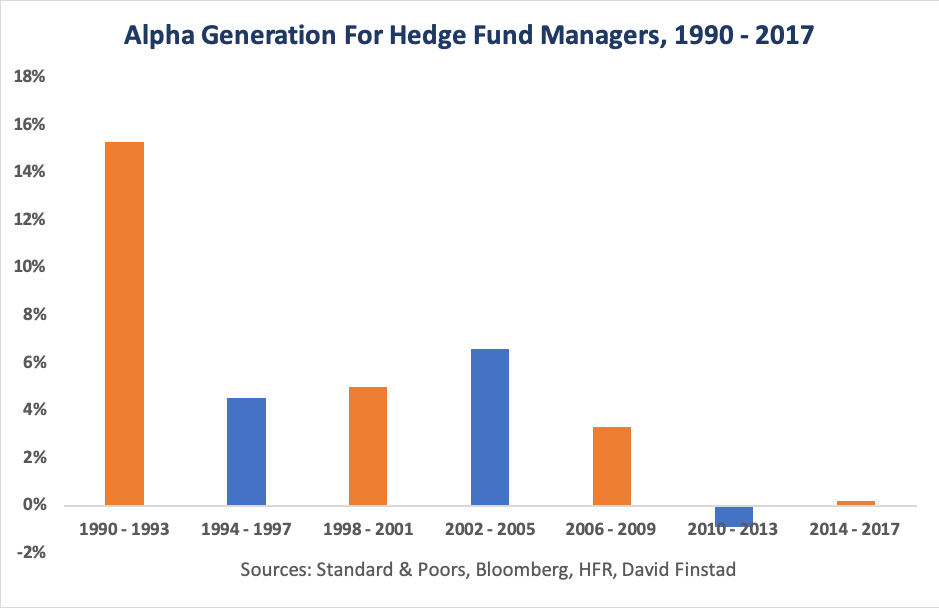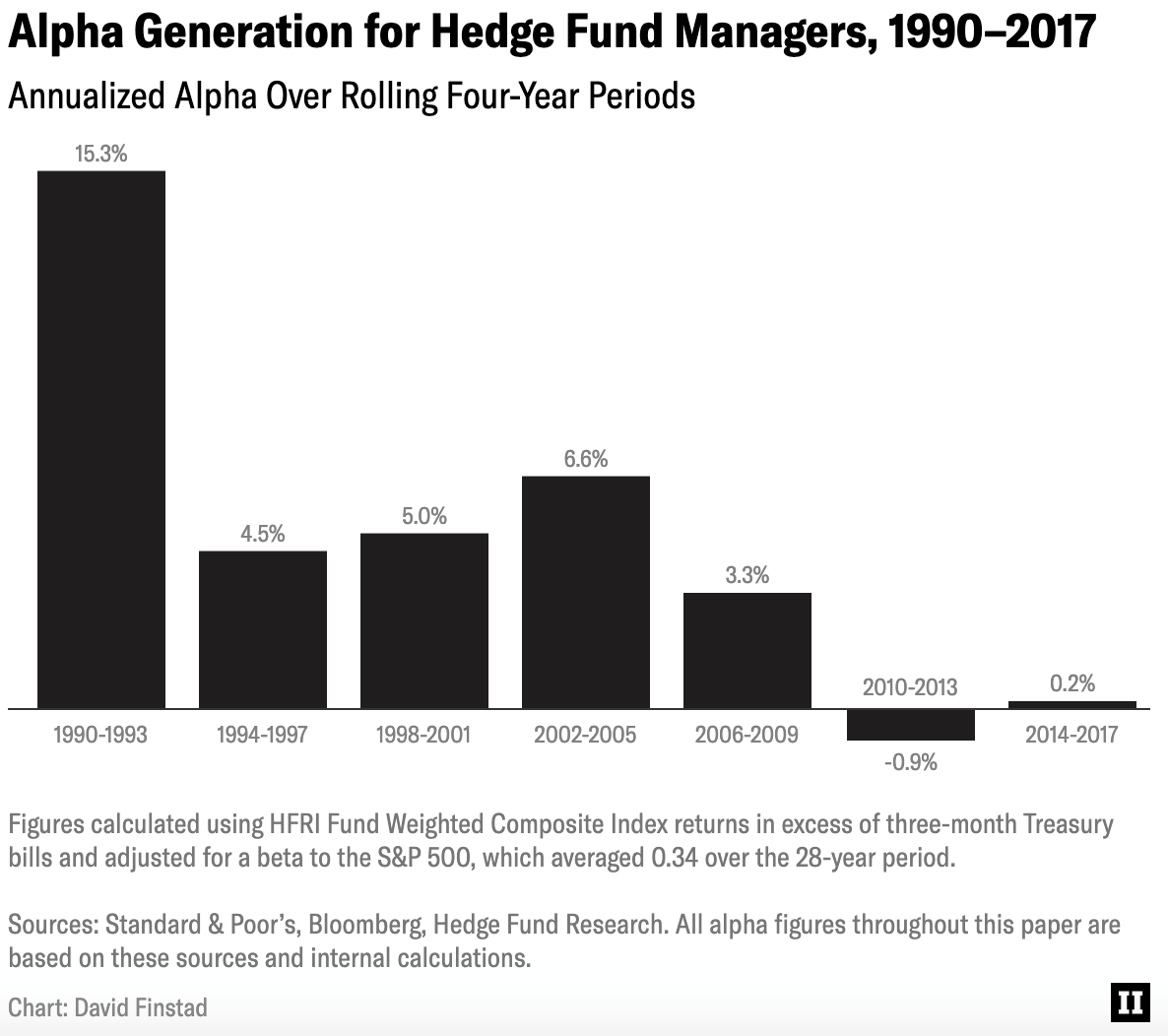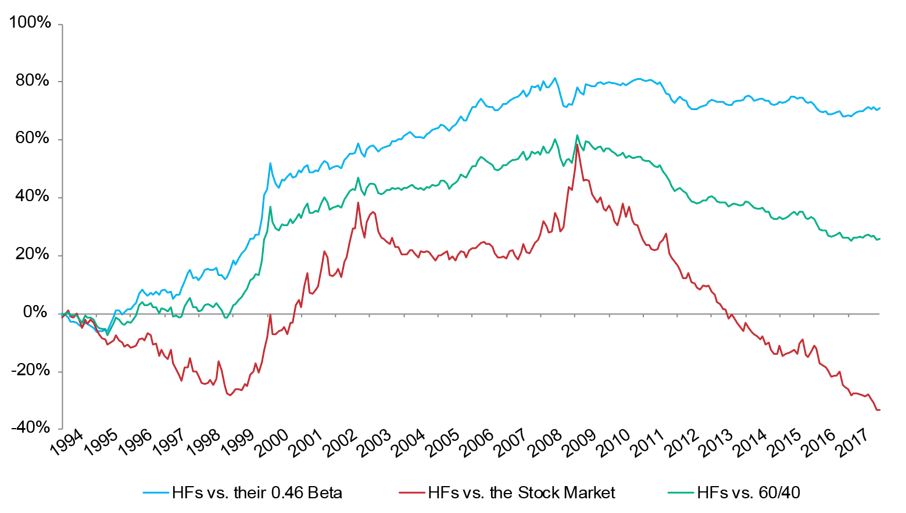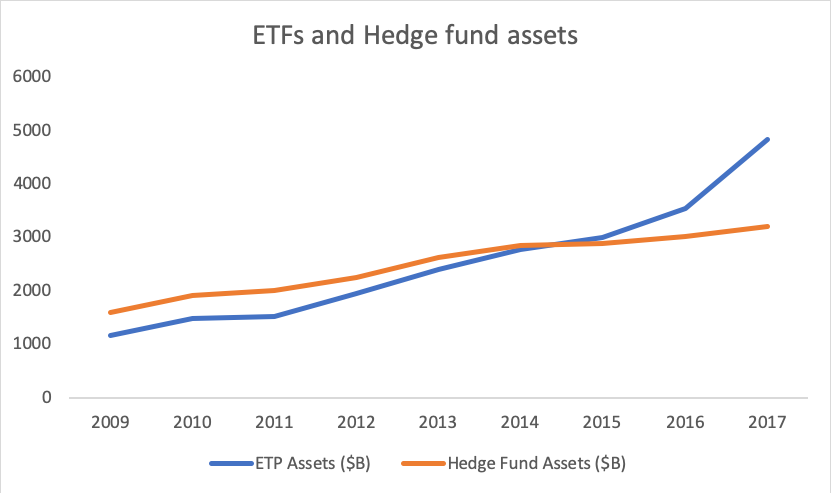Hedge fund managers were once said to be the masters of the universe. Private jets, pin-striped suits, and Patek Phillipes – they looked ten feet tall and bulletproof.
Pension funds and endowments would beg them to take their money. They were alpha machines, beating the market routinely, all while taking less risk. Hedge fund bosses would line the cover of business magazines. They would charge whatever fees they liked and made profit margins of 50%.
But then something happened.

It started with the alpha, which evaporated after the 2008 financial crisis. Then the performance melted away too. Where hedgies could once trounce the S&P 500 they quickly began lagging it. Soon they started lagging even a 60/40 passive portfolio – and this was before fees.
Quiet murmurings became open questions. Institutional investors, the major backers of hedge funds, started getting impatient.


Source: AQR
By 2016, after eight years of underperformance, it was all over. That year, hedge funds saw $70bn net outflows. Closures comfortably outnumbered launches. ETFs blistered ahead by total assets managed. “Hedge fund assets will never again exceed that of ETFs,” Jack Bogle, the founder of Vanguard, declared.

Source: Ultumus, Bloomberg
Why did hedgies lose their lustre?
One theory, popular with cynics, is that much of their alpha derived from insider trading and fraud. On this view, a number of elements came together in 2008: the Madoff scandal; heightened public annoyance with hedge funds after the subprime bubble; and a more aggressive DOJ under Barack Obama. These new realities meant that hedge funds had to behave themselves and with good behaviour came bad performance.
Another view is that their trading strategies became easily replicable. In their book, The Incredible Shrinking Alpha, Larry Swedroe and Andrew Berkin argued that hedge funds hit the downward slope before 2008. What really ate them, they argue, is academic research, which unpacked their trading strategies into “factors” and made them widely known. On this view, the rise of smart beta ETFs and the decline of hedge funds are one and the same event.
The final theory, popular with hedge funds themselves, is that they became a victim of their own success. As a tidal wave of institutional money flowed in in the early 2000s two dynamics were triggered, they argue. First, successful hedge funds became more conservative with a view to keeping big money institutional clients happy. Second, more competitor hedge funds came to market, meaning alpha got competed away.
Whatever the exact reason – as of mid-2019 the trend is clear. Hedge funds are going down, while smart beta and alternative ETFs are going up.
From Alpha to Smart Beta
While the rise of ETFs for many hedge funds has meant outflows and liquidations, for others, it has meant even more opportunities.
One set of opportunities has been seized upon by ETF providers themselves, which have built ETFs that use hedge fund strategies and benchmarks. These include long-short, market neutral and event-driven strategies (like merger arbitrage). This opportunity has been hoovered up by smaller and medium-sized providers that see these strategies as offering niches, where margins remain high and fee war remains far away.

Another opportunity set has been true blue hedge fund managers switching to the ETF wrapper while maintaining the same investment strategies – much like a snake changing skins. These fund providers are happy to lower their fees in exchange for the superior sales channels ETFs allow for. For Jeff Seeley, CEO of iM Global Partner, which offers hedge fund style ETFs, it is exactly this that brought his team over to ETFs.
“The ETF route is an easy access point a wider variety of clients – not just retail clients via financial advisers and intermediaries. We have had institutions say to us that if we can get at a lower price point [for hedge fund style exposures] it would be a beneficial product.”
He said that there may be more to come, “once [they] get comfortable with the transparency requirements,” and intraday liquidity (which allows investors to leave whenever they like), that the ETF industry requires.

The final set of opportunities arising for ETFs may well be the smart beta movement itself. While on the one hand, smart beta promises that the ETF industry can offer more than just cheap beta products. It has also always tried to sink sharp claws into active managers market share.
While the downward trend in hedge funds has been global, the uptake on the ETF side has mostly been in the US. In this regard, Europe, in particular, has lagged, with institutional investors proving quite loyal to hedge funds and having less interest in ETFs.
“Broadly speaking hedge fund ETFs have provided returns comparable to their benchmarks. Given this, it is somewhat challenging to explain why ETFs have captured only approximately 1% of hedge fund assets,” said Nicolas Rabener, head of London-based quant shop FactorResearch.
“Investment banks are already disrupting the hedge fund industry by offering systematic strategies via low-cost indices. Although these products are attractive from a cost perspective, they lack the winning characteristics of ETFs like full transparency and accessibility.”
ETF Insight is a new series brought to you by ETF Stream. Each week, we shine a light on the key issues from across the European ETF industry, analysing and interpreting the latest trends in the space. For last week’s insight, click here.




